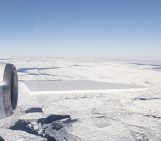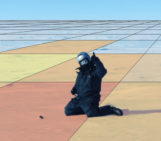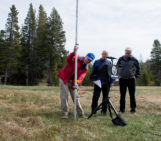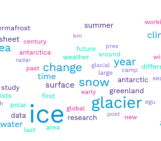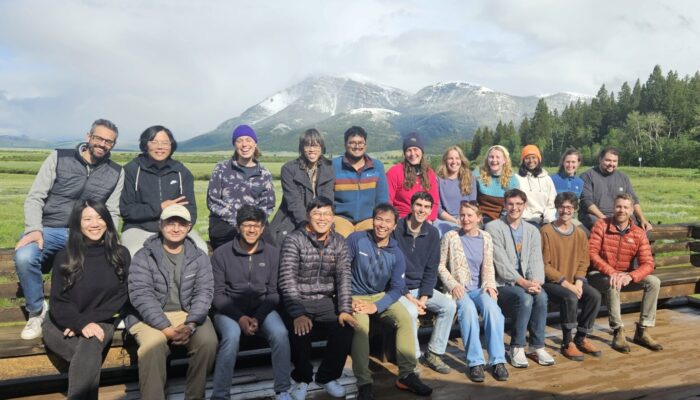
An isolated, idyllic, and inspiring setting in the gorgeous Centennial Valley of Montana, where nothing pulls your attention from the task ahead, a motivated group of PhD students and postdocs in glaciology, and five energetic lecturers: the perfect combination for tackling the ambitious challenge of exploring the interface between glaciology and machine learning. Who wouldn’t learn well here, especially with wild geese, antelopes, and hummingbirds as your neighbours?
From the 14th until the 23rd of June this year, we – a group of 16 early career researchers and five lecturers – met at the Taft-Nicholson Center in picturesque Centennial Valley, Montana, for the second Glaciology in Machine Learning Summer School (GlaMacLeS). Initiated and organised by Doug Brinkerhoff from the University of Montana, Missoula, the aim of this summer school was to enable the next generation of glaciological researchers to engage with the rapidly evolving field of machine learning.
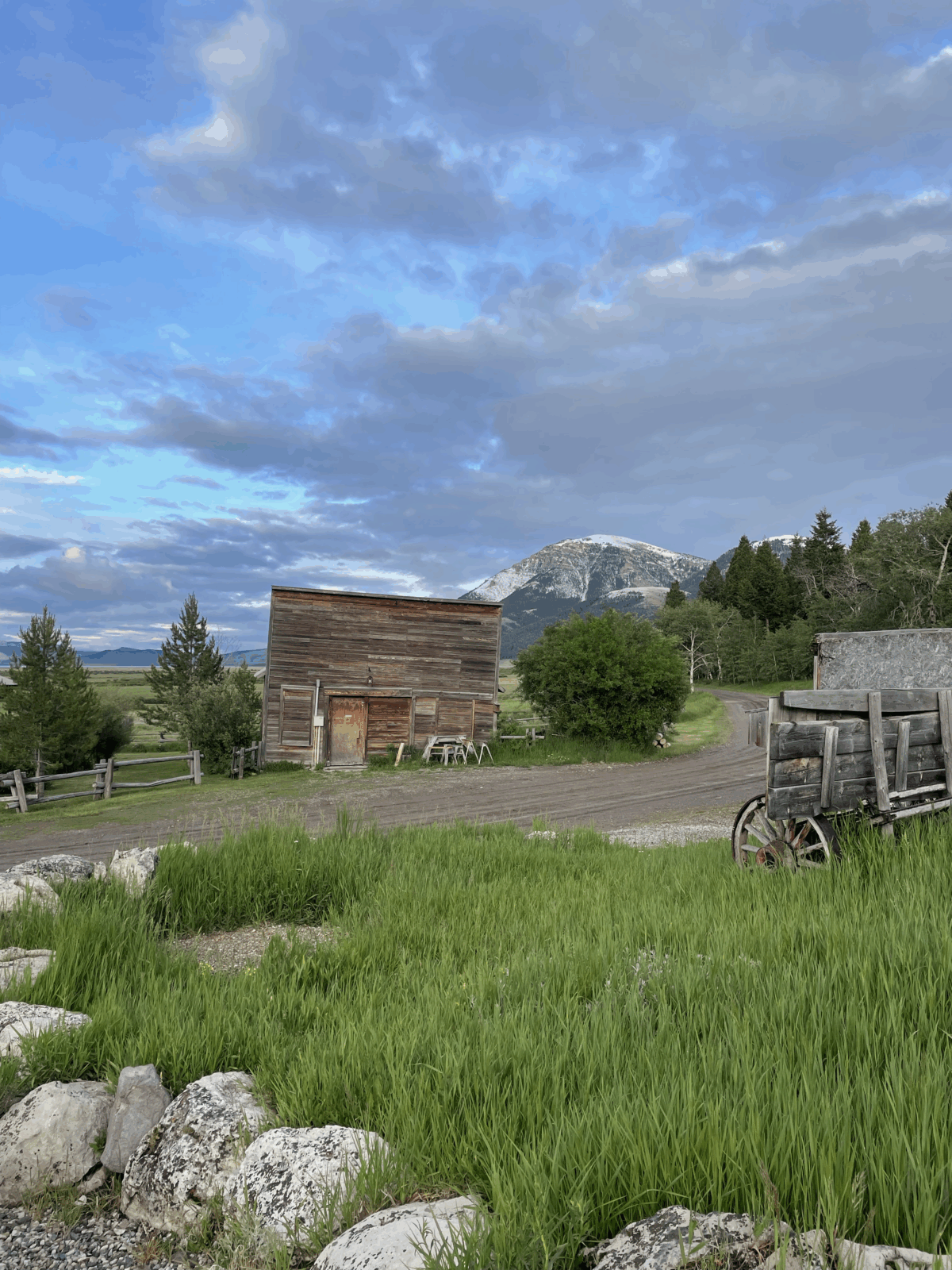
Cabin at the Taft-Nicholson Center. [Credits: Leah Sophie Muhle]
Neural Nets on Thin Ice: Glaciology in Machine Learning
Machine learning has long supported climate research – for example, in weather prediction and ocean circulation modeling – but its application in glaciology is still relatively new and a rapidly growing field. Machine learning techniques are now being applied to a wide range of glaciological problems: identifying features in the cryosphere from satellite imagery, such as glacier calving fronts or blue ice areas; filling in gaps where direct observations are missing, like glacier bed topography; and advancing glacier and ice sheet modeling through emulators that replicate physical models or by solving inverse problems with Bayesian approaches. The goal of GlaMacLeS is to provide a comprehensive overview of the growing interface between glaciology and machine learning, and to build a collaborative community of practice and supportive network.

In the middle of the Centennial Valley. [Credits: Christina Draeger]
Surrounded by mountains, prancing pronghorns, scurrying ground squirrels and curious hummingbirds, we dived into the world of machine learning, received an overview over existing techniques and explored how we could integrate them into our own research. Fortunately, the breadth of the lecturer’s research interests mirrored ours, which gave us insights into the machine learning methods they were already using and which methods might be appropriate for our own work.
In the Classroom: From Calving to Coding
The week was packed with a range of lectures, hands-on coding challenges, group projects led by our lecturers Doug Brinkerhoff, C. Yao Lai, Jake Downs, Daniel Cheng, and Mauro Perego – as well as plenty of fun social activities. We kicked things off with a collaborative whiteboard brainstorm, mapping out what we saw as the key processes in glaciology and their associated mathematical models. It was a fun and insightful exercise – part icebreaker, part collective brain dump – that helped level the playing field across our varied backgrounds and gave everyone a shared starting point for the week ahead.
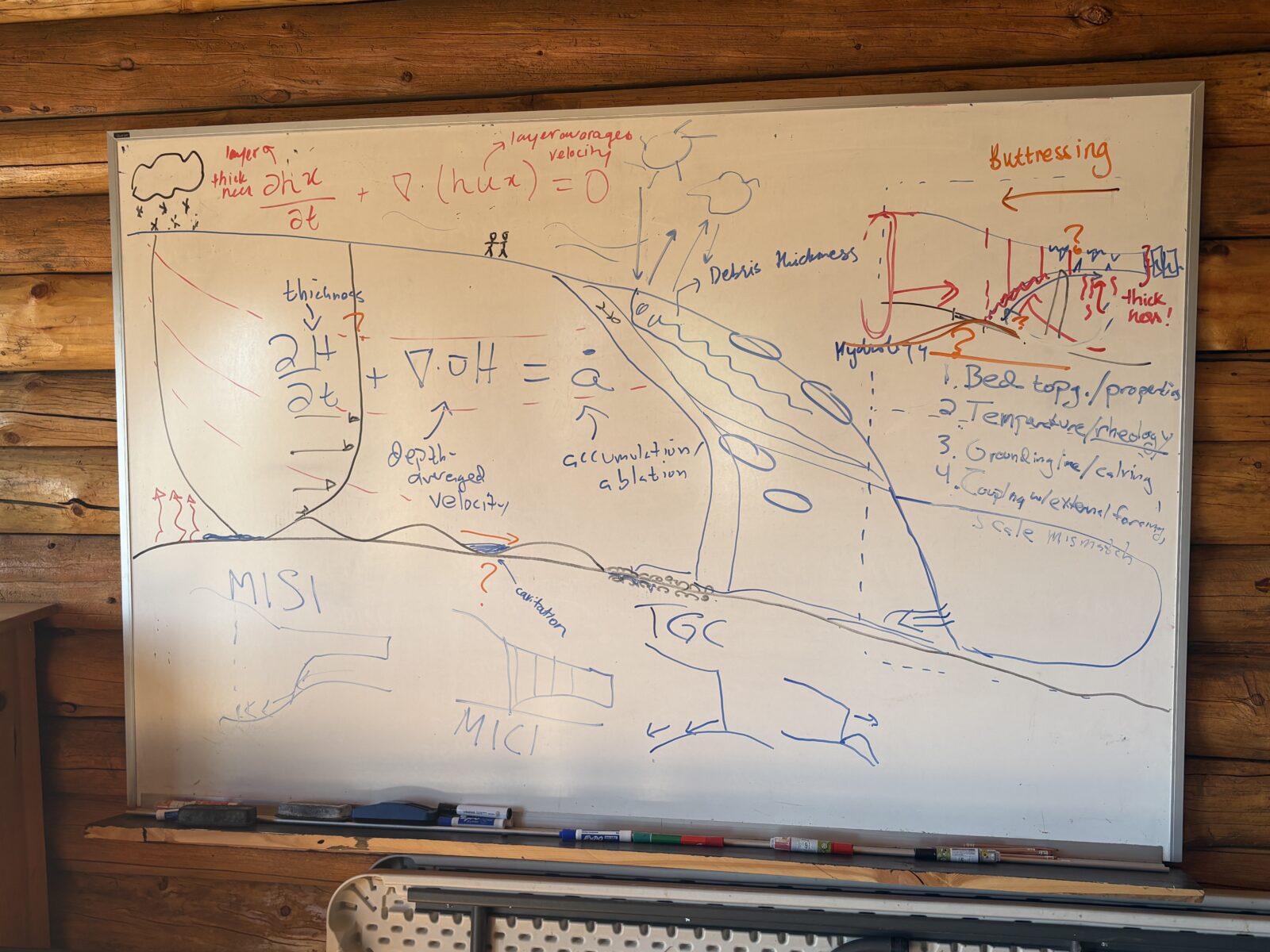
A collaborative attempt to visualise the state of glaciological process knowledge. [Credits: Bryony Freer]
From there, we were exposed to a wide range of machine learning techniques, with real-world examples showing how tools like neural networks and Bayesian inference are being used to tackle long-standing problems in glaciology. We covered everything from the fundamentals of neural networks and their role as universal function approximators, to convolutional and graph neural networks, physics-informed neural networks (PINNs), and operator networks. One particularly memorable session focused on emulators, where we learned about and interacted with the Instructed Glacier Model (IGM) – a fascinating example of how deep learning can accelerate physically based models.
The last three days we split into groups and worked on a range of projects from CNN-based classification of remote-sensing imagery – detecting features like blue-ice zones and ice-shelf basal channels – to PINNs for inferring basal drag and ice viscosity, and even experimenting with generative modeling to create realistic subglacial topography.
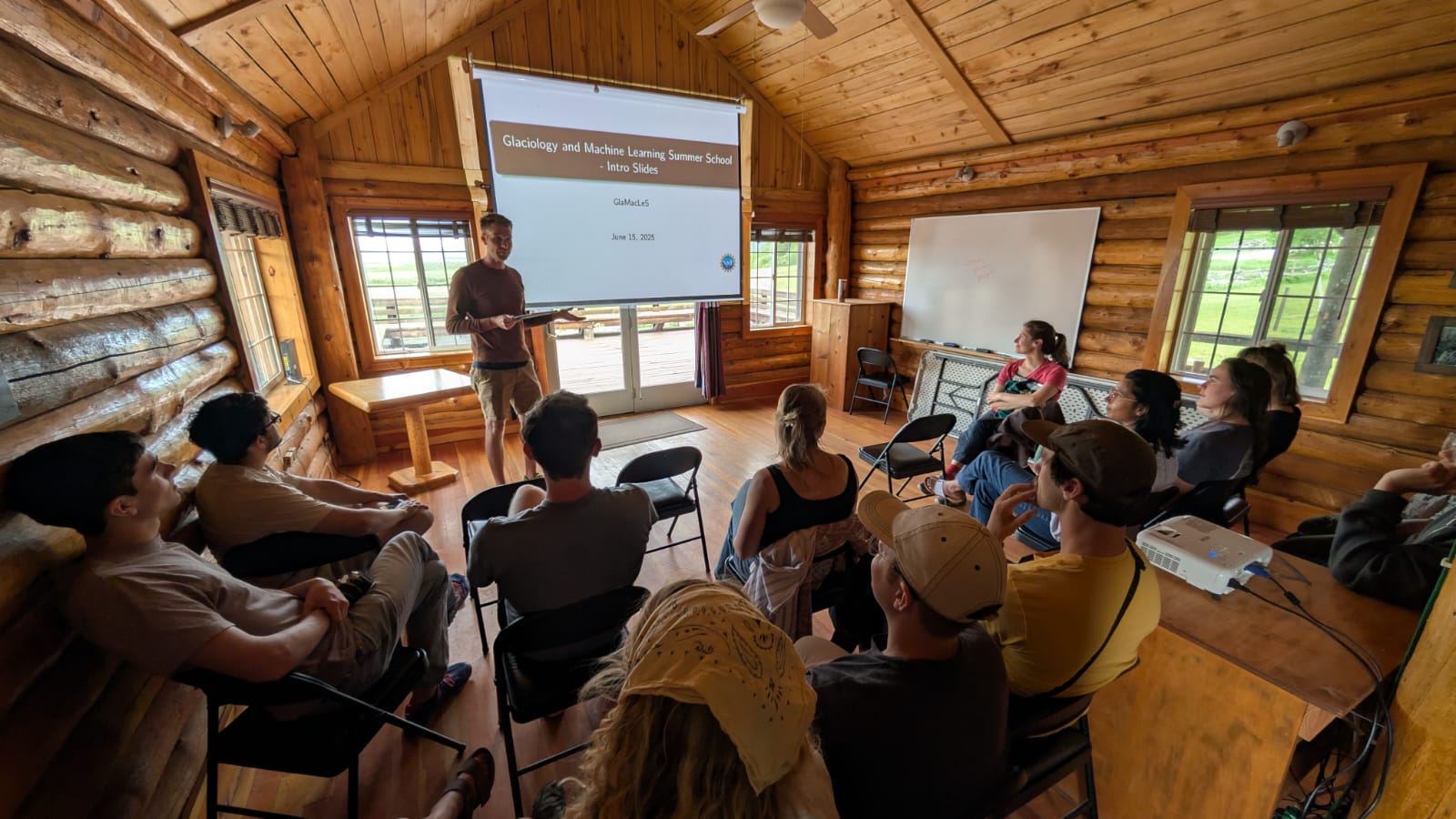
Inside the cosy lecture cabin. [Credits: Wilson Cheung]
Exploring Beautiful Montana
When we weren’t hard at work in the classroom, the Taft-Nicholson Center provided a stunning backdrop to unwind and get to know each other as a group. We went birdwatching, learnt to identify the local wildflowers, stargazed under crystal-clear skies, and spent a peaceful morning canoeing down the local river. Evenings back at the center often turned competitive, as the international cohort battled it out in the inaugural “GlaMacLeS Pool World Cup”, held over several nights in the on-site bar. Towards the end of the week we ventured into Yellowstone National Park, where we spent an unforgettable day exploring the Norris Geyser Basin, bubbling Paint Pots, and the spectacular Great Prismatic Spring.
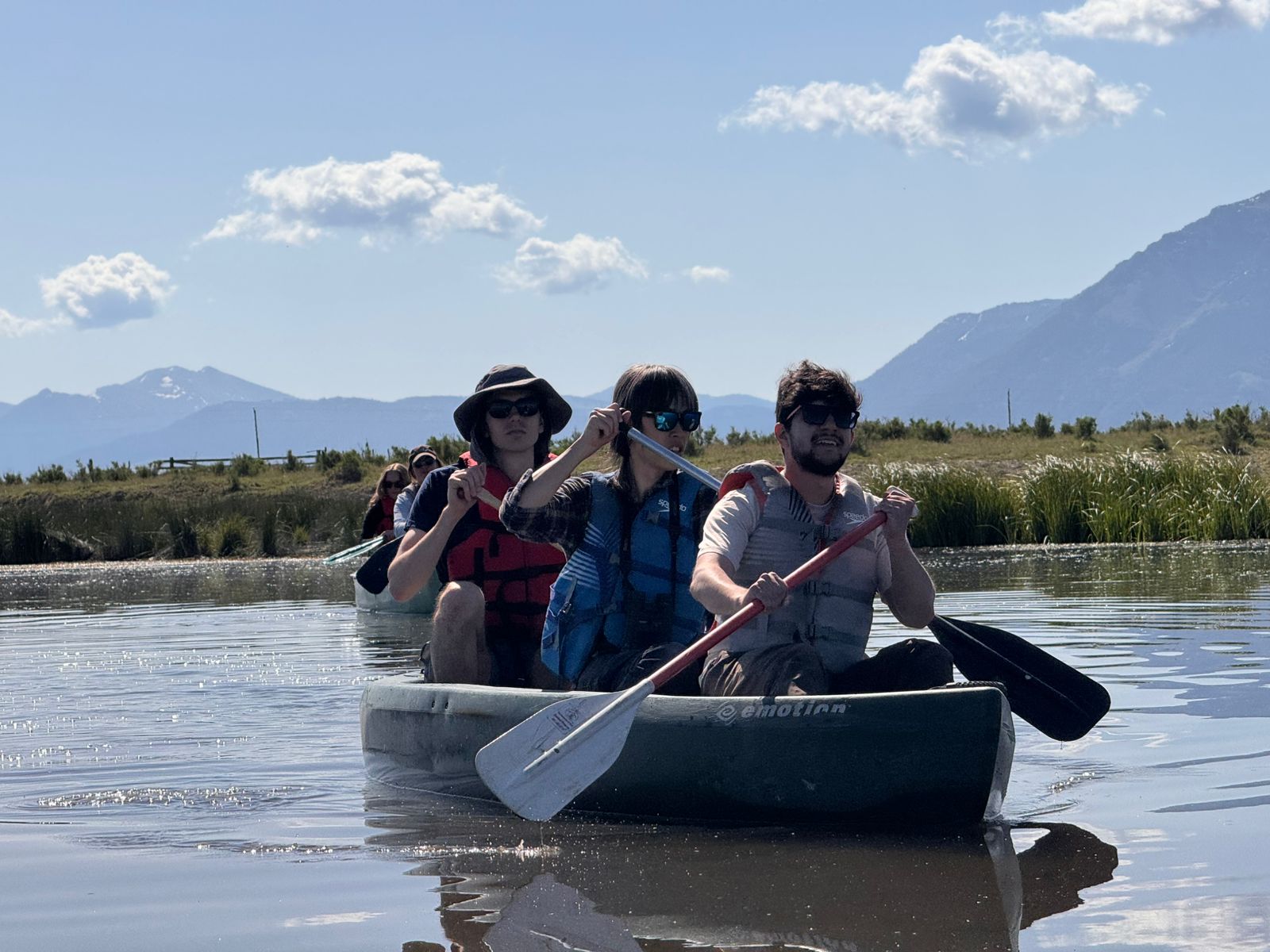
Canoeing in the morning. [Credits: Tenzing Chogyal Sherpa]
Saddle up for Science
We also had the chance to engage with the local community during the weekly “KOW talk” (Knowledge on Wednesdays), a long-standing Taft-Nicholson tradition where visitors and local experts share their work over a potluck dinner. Doug’s talk on the rise of generative AI – and the lively discussion it sparked about the future of AI in society – was a wonderful way to connect our scientific discussions with broader public conversations in the one-of-a-kind community room at the Taft-Nicholson Center, where our academic debate unfolded amidst cowboy saddles, pool tables, and a saloon piano.

The Grand Prismatic Spring in Yellowstone National Park. [Credits: Christina Draeger]
GlaMacLeS is coming back!
“At GlaMacLeS 2025, I learned cutting-edge machine learning from leading scholars and applied it to my High Arctic glacier research using excellent facilities. I built meaningful collaborations and friendships, gaining insights that go beyond algorithms. This experience strengthened our community’s capacity to tackle the known unknowns – and prepare for the unknown unknowns – in cryosphere science” – Wilson Cheung
Attending GlaMacLeS was an incredible opportunity to meet other researchers interested in building links between glaciology and machine learning and to establish a community of practice – an effort which is also supported by the ML4Cryo community. Especially, as most of us are not machine learning experts, learning together and supporting each other is invaluable if we want to integrate these methods in our research. We really hope that GlaMacLeS will join the ranks of the traditional glaciology summer schools over the next few years and agree with Doug that – next to learning all we did – it was an amazing opportunity to see a beautiful part of Montana. Luckily, GlaMacLeS will happen again next year from the 5th to 13th of July 2026. So, if you have no plans for next July, apply for the third round of GlaMacLeS!
Edited by Emma Pearce
Further Reading
Fancy reading more about how Machine learning is used in the Cryosphere? Have a read of these blog posts below:

